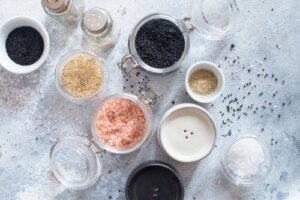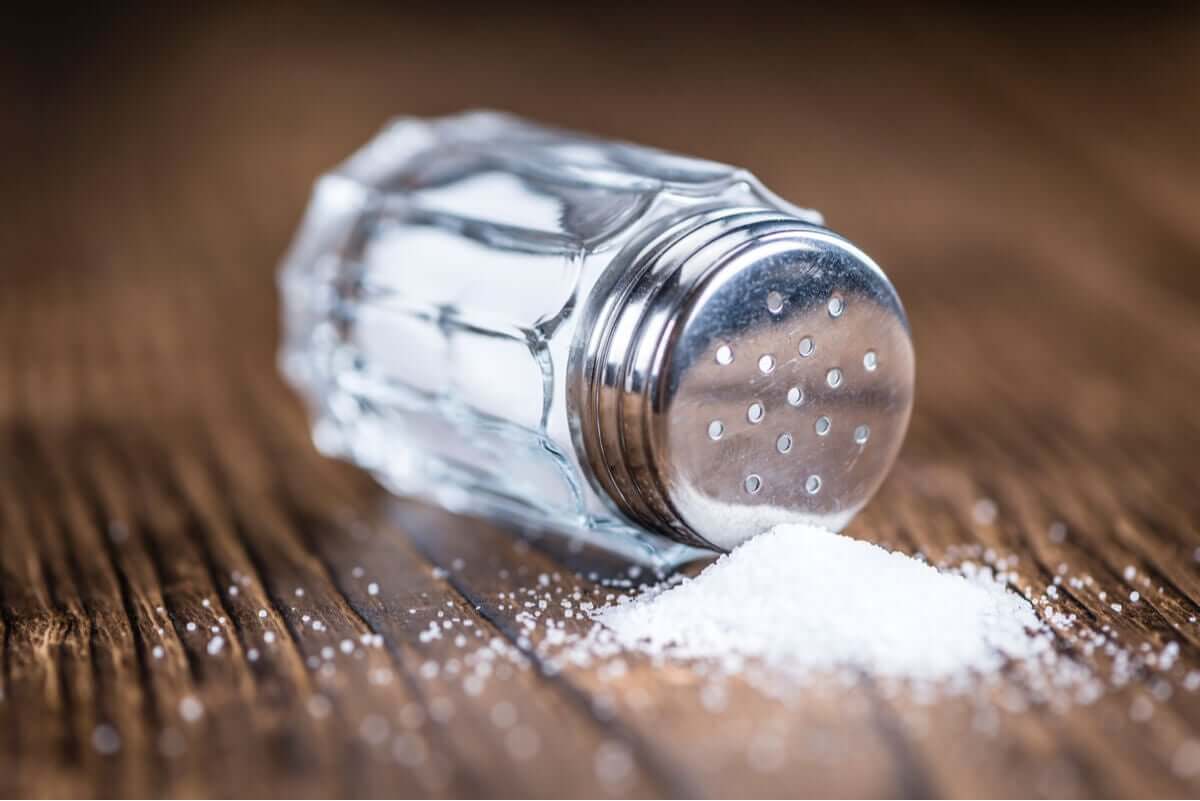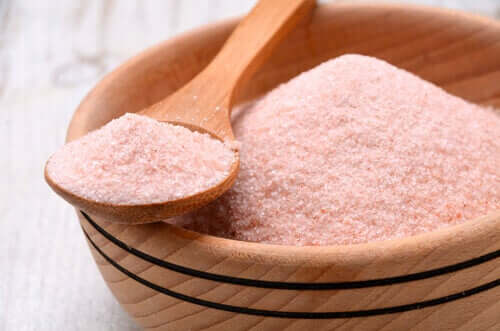Which types of salt are the healthiest?


Reviewed and approved by the pedagogue in physical education and nutritionist Elisa Morales Lupayante
In the gastronomic world, there are several types of salt and each of them is used to prepare different recipes. For example, fine salt is usually used to prepare pasta sauces, while coarse salt is used for grilled or broiled food, seafood, and meat recipes.
Undoubtedly, salt’s the most widely used seasoning in cooking around the world. And while it can contribute a lot to the enhancement of flavors, it’s important to learn to use it in moderation, as its excessive consumption is harmful to health.
In fact, World Health Organization experts recommend reducing sodium intake to reduce blood pressure and the risk of cardiovascular disease, stroke, and coronary heart disease in adults.
Types of salt that we can find
First of all, there’s an important aspect to bear in mind: Although all types of salt contain sodium, this substance isn’t always present to the same extent. Therfore, not all salts contain the same amount of sodium and other minerals.
Knowing how to use each type of salt can help us to better highlight the flavor of food and obtain much more flavorful dishes. Therefore, it’s best to know what the different types of salt are and which one is considered to be the healthiest. Ready to get started? Let’s go!
1. Normal table salt

Fine salt or “table salt” is the type of salt most commonly used in everyday life. It contains 95 % sodium chloride and other minerals, such as iodine and fluoride, as well as other additives and preservatives, are added in the production process.
If, at the moment of preparing food, you’re seeking a balance in flavor, that’s to say, to season meals, common (or “table”) salt is the most suitable type of salt for this purpose.
Read also: Excessive Salt or Sugar Intake: Which Is Worse for Your Health?
2. Unrefined sea salt
This is obtained through natural processes such as salt water evaporation. It’s composed of chlorine, sodium, iodine, fluorine, among other additives. Likewise, sodium chloride is fundamental among these components.
Unlike common salt, it contains a large amount of minerals such as sulfur, boron, carbon, magnesium, potassium, sodium, fluorine, phosphorus, iron, zinc, iodine, among others. On the other hand, it has a grayish color and gives a more intense flavor to food than common salt.
This one is much healthier to use in recipes than normal table salt. It is more expensive because it’s not as common. What’s even more important than knowing which of these two salts is the healthiest, is using the correct amount in recipes.
3. Fleur de sel
This type of salt comes from the top layer of sea salt mines. A traditional and artisanal technique is used to collect it from the Atlantic Ocean and Mediterranean Sea.
It’s mostly used in gourmet recipes due to its excellent gastronomic properties. It’s a hypotonic which means that consuming it won’t cause water retention. If you compare it with other salts, it’s low in sodium (15%) and sodium chloride (only 92.9%).
In regard to taste, it’s not so intense than other salts, since it easily dissolves in your mouth.
4. Himalaya salt

This variety mainly originates from: Pakistan and Latin America, and not from the Himalayas. In recent years, as a result of marketing related to its place of origin, it’s become very popular because it’s been attributed a great nutritional value.
It’s said to be it’s high in essential nutrients (84), minerals, and trace elements. This salt is great for bodily functions, which justifies why it is so rare. Another reason that it has become so popular is due to its pink color, which makes it stand out more.
Look at this article: 8 surprising benefits of sea salt
Types of salt, which is the healthiest?
Every type has some sort of marketing strategy implying it’s the healthiest, most natural, and purest. However, we can’t believe everything we here, as, on many occasions, the claims are exaggerations.
The following recommendations can make your selection process more practical:
- Every type contains sodium chloride as an essential element, thus it should not be consumed in large quantities.
- Eating extra salt isn’t actually necessary because you can get sodium from a lot of foods. According to Dr. Mario Virgolini, coordinator of the Healthy Argentina Plan of the health initiative, about 50% of the excess salt comes from processed foods, such as bread and canned food.
- It’s mainly used because it gives your food flavor and, unfortunately, not for its possible health benefits.
- Marketing strategies cause natural salt prices to be higher. Obviously, economic interests rule the natural world. For that reason, it’s hard to tell if a natural product is actually worth its price, or if’t is simply a marketing scheme.
Reducing salt consumption
In conclusion, the problem isn’t salt itself, but the way we consume and the amount we use in each meal.
Its exaggerated consumption causes cardiovascular conditions, renal failure, gastric disorders, osteoporosis, etc.
A study published in the British Medical Journal showed that patients who reduced salt improved their renal function, since the kidneys had difficulty processing excess sodium.
The same study found that sodium reduces the elasticity of blood vessel walls and heart cells.
Another study from Harvard Medical School indicates that a low-salt diet reduces blood pressure and, therefore, the risk of cardiovascular accidents.
Several specialists give the following recommendations to lower salt consumption:
- Eliminate salt shakers from the table to keep family members and yourself from adding extra salt.
- Eliminate the consumption of canned and pre-cooked dishes.
- Reduce the consumption of cheese, cold cuts, and pickles.
- Reduce or eliminate the consumption of smoked foods.
- Avoid salty snacks, such as potato chips, salted nuts, etc.
- Use less soy sauce, ketchup, seasoned salts, etc.
Remember that spices and herbs can be an excellent alternative to salt. Therefore, trying them is worth the trouble in order to elaborate healthier preparations.
All cited sources were thoroughly reviewed by our team to ensure their quality, reliability, currency, and validity. The bibliography of this article was considered reliable and of academic or scientific accuracy.
- Accurate Measurements of Sodium Intake Confirm Relationship with Mortality. Brigham and Women’s Hospital. 2018
https://www.brighamandwomens.org/about-bwh/newsroom/research-briefs-detail?id=3053 - Errors in estimating usual sodium intake by the Kawasaki formula alter its relationship with mortality: implications for public health. International Journal of Epidemiology DOI: 10.1093/ije/dyy114
This text is provided for informational purposes only and does not replace consultation with a professional. If in doubt, consult your specialist.








